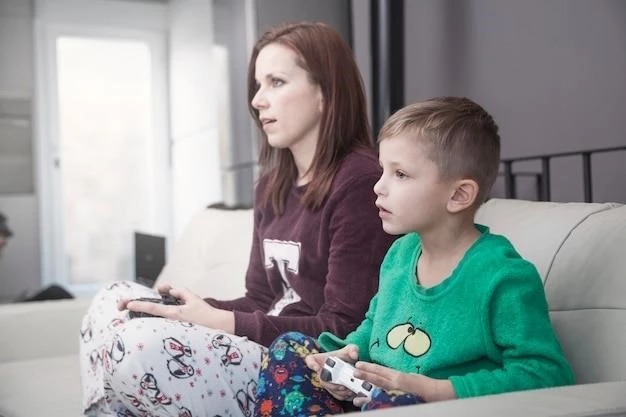Advice on understanding the causes‚ symptoms‚ treatment options‚ prognosis‚ diagnosis‚ living with‚ research on‚ and impact on children of Centrotemporal Epilepsy will be covered in this comprehensive article. Stay tuned for valuable insights!
Introduction to Centrotemporal Epilepsy
Centrotemporal Epilepsy‚ also known as Rolandic epilepsy‚ is a type of epilepsy that typically begins in childhood. It is usually characterized by seizures that affect the face‚ throat‚ and sometimes the hands. Understanding this condition is crucial for effective management.
Causes⁚ The exact cause of Centrotemporal Epilepsy is not fully understood‚ but it is believed to be related to abnormal electrical activity in the brain. Genetic factors may also play a role in some cases;
Symptoms⁚ Common symptoms include seizures that often occur at night‚ drooling‚ numbness or tingling in the face‚ difficulty speaking‚ and involuntary movements of the face or tongue.
Treatment Options⁚ Treatment may involve anti-seizure medications to help control and prevent seizures. In some cases‚ surgery or dietary therapy may be recommended.
Prognosis⁚ Centrotemporal Epilepsy is often outgrown in adolescence‚ with many individuals experiencing a decrease in seizures as they get older. The long-term prognosis is generally favorable.
Diagnosis⁚ Diagnosis typically involves a thorough medical history‚ physical examination‚ EEG testing‚ and sometimes imaging studies to evaluate brain activity.
Living with⁚ Living with Centrotemporal Epilepsy requires adherence to treatment plans‚ regular follow-ups with healthcare providers‚ and being aware of triggers that may worsen seizures.
Research⁚ Ongoing research aims to improve understanding‚ diagnosis‚ and treatment of Centrotemporal Epilepsy‚ with a focus on identifying more targeted therapies and interventions.
Impact on Children⁚ Centrotemporal Epilepsy can impact a child’s daily life‚ school performance‚ and emotional well-being. It is important for parents and caregivers to provide support and create a safe environment for the child.
Causes of Centrotemporal Epilepsy
Centrotemporal Epilepsy is thought to be caused by abnormal electrical activity in the brain‚ particularly in the centrotemporal region. While the exact cause is not fully understood‚ factors such as genetics and family history may contribute to its development. Some children may have a genetic predisposition to this type of epilepsy‚ increasing their susceptibility. Additionally‚ certain environmental factors or triggers‚ such as sleep deprivation or stress‚ may provoke seizures in individuals with Centrotemporal Epilepsy. Research is ongoing to delve deeper into the underlying causes of this condition and explore potential genetic and neurological factors that may be involved in the development of Centrotemporal Epilepsy. Understanding the potential causes can help healthcare providers tailor treatment plans and provide appropriate care for individuals affected by this form of epilepsy.
Symptoms of Centrotemporal Epilepsy

Symptoms of Centrotemporal Epilepsy can vary but commonly include seizures that affect the face and throat‚ typically manifesting during sleep or upon waking. These seizures may cause drooling‚ altered sensation in the face‚ difficulty speaking‚ tingling‚ or twitching in facial muscles. Children with this form of epilepsy may experience muscle weakness or jerking movements‚ which can be temporary and are known as focal aware seizures. Recognizing these symptoms is crucial for early diagnosis and prompt medical intervention. It is essential for caregivers and healthcare providers to monitor and document these symptoms to better understand the individual’s seizure patterns and provide appropriate management strategies. Seeking medical advice and obtaining an accurate diagnosis are key steps in managing Centrotemporal Epilepsy and improving the quality of life for those affected.
Treatment Options for Centrotemporal Epilepsy
When it comes to managing Centrotemporal Epilepsy‚ there are several treatment options available to help control seizures and improve quality of life. The primary treatment typically involves medications‚ such as antiepileptic drugs‚ which aim to reduce the frequency and intensity of seizures. It is crucial for individuals with Centrotemporal Epilepsy to work closely with their healthcare team to determine the most effective medication regimen and monitor for any side effects that may occur. In cases where medications alone are not sufficient‚ other treatment modalities may be considered‚ including dietary therapy or‚ in rare instances‚ surgery. Ketogenic diet and Modified Atkins diet are dietary therapies that have shown promise in seizure control for some individuals with epilepsy. Surgical interventions‚ such as focal resection‚ may be considered for cases where seizures are not well-controlled with medication and significantly impact the individual’s quality of life. It is important for individuals with Centrotemporal Epilepsy to adhere to their treatment plan‚ attend regular follow-up appointments‚ and communicate any changes in symptoms or side effects to their healthcare provider to optimize care and overall well-being.
Prognosis for Centrotemporal Epilepsy
Understanding the prognosis for Centrotemporal Epilepsy is essential for individuals and their families. In many cases‚ this form of epilepsy is considered benign and often improves with age‚ particularly during adolescence. The majority of children with Centrotemporal Epilepsy outgrow the condition by their teenage years‚ experiencing a decrease in seizure activity or becoming seizure-free. This favorable prognosis is reassuring for both patients and caregivers‚ as it indicates a high likelihood of overall improvement in seizure control and quality of life. Regular monitoring by healthcare providers‚ adherence to treatment plans‚ and lifestyle modifications can further enhance the positive outlook for individuals living with Centrotemporal Epilepsy. It is important to remain proactive in managing this condition‚ stay informed about any new developments in treatment options‚ and seek support from healthcare professionals to optimize long-term outcomes and well-being.
Diagnosis of Centrotemporal Epilepsy
Accurate diagnosis of Centrotemporal Epilepsy is crucial for effective management. Diagnosis often involves a detailed medical history‚ physical examination‚ and neurological evaluation. Additionally‚ electroencephalography (EEG) plays a significant role in the diagnosis by capturing brain wave activity and detecting abnormal electrical patterns that are characteristic of Centrotemporal Epilepsy. During the EEG‚ specific patterns known as centrotemporal spikes or Rolandic spikes may be observed‚ aiding in the confirmation of the epilepsy type. Imaging studies like MRIs are sometimes used to rule out other potential causes of seizures. It is essential for healthcare providers to consider both clinical symptoms and diagnostic test results when confirming a diagnosis of Centrotemporal Epilepsy. Families and caregivers should actively participate in the diagnostic process‚ provide accurate information about the individual’s symptoms‚ and collaborate closely with the medical team. Timely and accurate diagnosis is key to implementing appropriate treatment strategies and improving outcomes for individuals living with Centrotemporal Epilepsy.
Living with Centrotemporal Epilepsy
Living with Centrotemporal Epilepsy requires adapting to the challenges associated with the condition while maintaining a positive outlook on life. Following a treatment plan prescribed by healthcare providers is essential to manage seizures effectively. It is important to take medications as prescribed‚ attend regular medical appointments‚ and monitor any changes in symptoms to ensure optimal care. Creating a supportive environment at home and school can promote the well-being of individuals with Centrotemporal Epilepsy. Educating family members‚ teachers‚ and peers about the condition can help raise awareness and provide necessary support. Implementing stress-reducing strategies‚ maintaining a healthy lifestyle‚ and getting adequate rest can also contribute to seizure management. Joining support groups or connecting with others facing similar challenges can offer emotional support and valuable insights. By actively engaging in self-care‚ seeking assistance when needed‚ and remaining informed about the latest developments in epilepsy management‚ individuals with Centrotemporal Epilepsy can lead fulfilling lives and thrive despite the condition.
Research on Centrotemporal Epilepsy
Ongoing research on Centrotemporal Epilepsy plays a vital role in advancing our understanding of this condition and improving treatment strategies. Scientists and healthcare professionals are continually exploring the underlying mechanisms of Centrotemporal Epilepsy to identify new therapeutic targets and interventions. Research efforts focus on investigating genetic factors that may contribute to the development of epilepsy‚ as well as how abnormalities in brain activity impact seizure generation. Studies also aim to enhance diagnostic techniques‚ such as refining EEG interpretations and imaging technologies‚ to aid in more accurate and timely diagnoses. Additionally‚ research is dedicated to evaluating the safety and efficacy of novel treatment approaches‚ including medication advancements‚ dietary therapies‚ and surgical options. By participating in clinical trials and supporting research initiatives‚ individuals with Centrotemporal Epilepsy can contribute to the collective knowledge base and help improve outcomes for future generations. Staying informed about the latest research findings and collaborating with healthcare providers can empower individuals and families affected by Centrotemporal Epilepsy to make well-informed decisions about their care and treatment.
Impact on Children⁚ Centrotemporal Epilepsy
Centrotemporal Epilepsy can have a significant impact on children‚ affecting various aspects of their lives including school performance‚ social interactions‚ and emotional well-being. Seizures occurring during sleep or waking hours can disrupt daily activities and lead to challenges in concentration and learning. Children may experience feelings of frustration‚ anxiety‚ or embarrassment due to their condition‚ impacting their self-esteem and confidence. Parents and caregivers play a crucial role in providing support‚ creating a safe environment‚ and helping children cope with the effects of epilepsy. Educating teachers‚ school staff‚ and peers about Centrotemporal Epilepsy can raise awareness and foster understanding within the school community. Encouraging open communication‚ promoting a sense of normalcy‚ and facilitating access to resources can aid children in managing their condition effectively. It is essential for families to work closely with healthcare providers to develop individualized care plans that address the unique needs of each child with Centrotemporal Epilepsy. By promoting a positive and nurturing environment‚ children can thrive despite the challenges posed by epilepsy‚ allowing them to reach their full potential and lead fulfilling lives.
